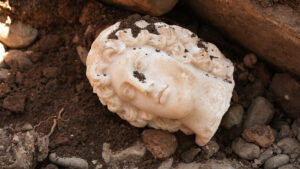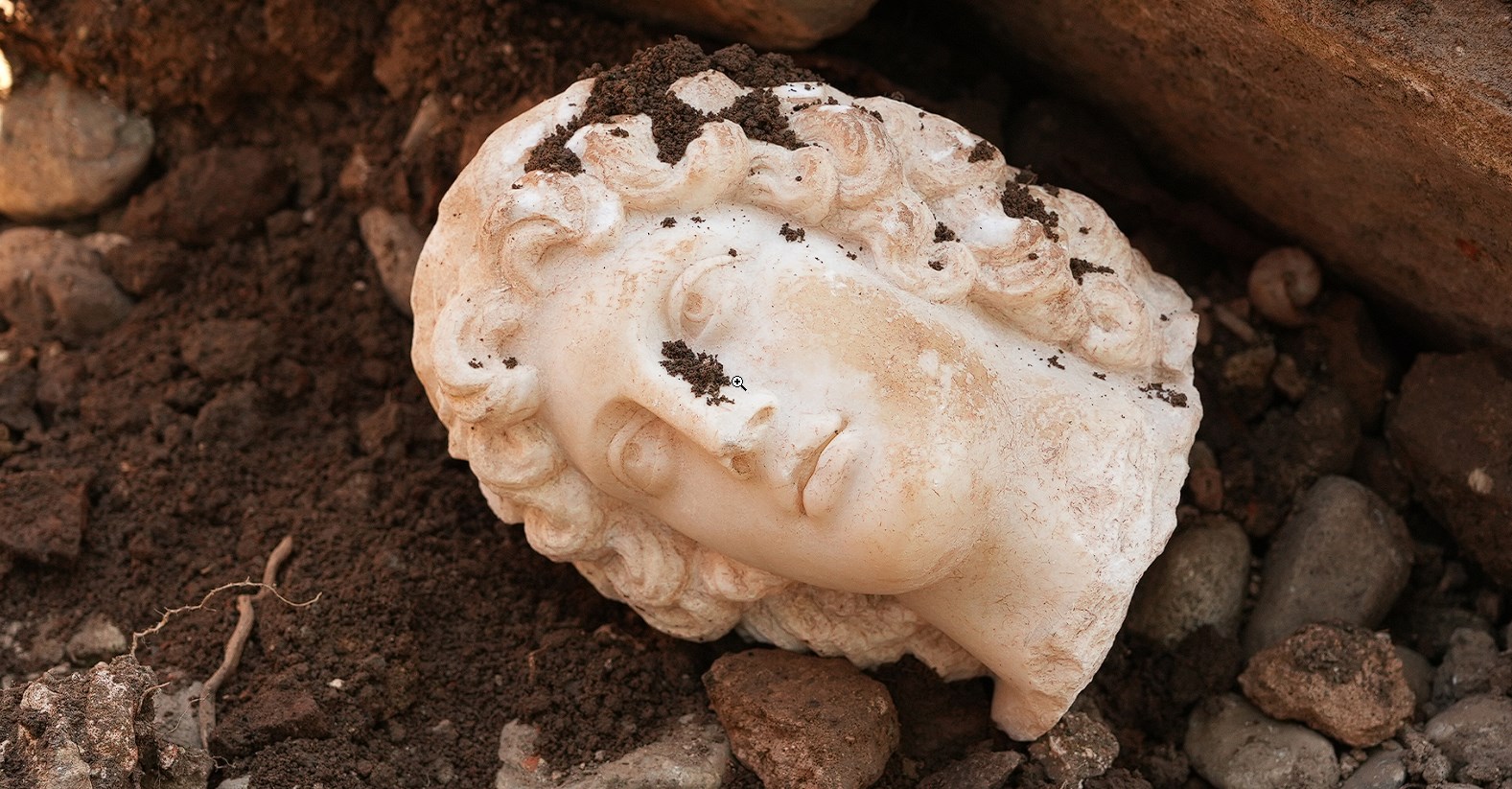The head of a marble statue of Alexander the Great unearthed in Turkey shows the enduring popularity of the ancient ruler hundreds of years after his death, experts say.
The object was found amid the ruins of the upper levels of a Roman-era theater at Konuralp, north of Düzce and near Turkey’s northwest coast, and is thought to date to the second century. Alexander the Great died in 323 B.C, so the statue may have been made more than 400 years after his death.
The remains of other marble statues, including heads of the Greek god Apollo and the mythical monster Medusa, have also been found in the ruins of the theater, the Düzce Municipality wrote in a statement in Turkish.

(Image credit: Düzce Municipality)
Alexander was a popular figure in the ancient world long after his untimely death at age 32 in Babylon beside the Euphrates River, historian Paul Cartledge, a professor at the University of Cambridge and the author of “Alexander the Great: the Hunt for a New Past” (Overlook Press, 2004), told Live Science.
One reason for Alexander’s enduring popularity was that his successors promoted him as an ideal ruler whom they hoped to emulate. “The contenders for his throne, and therefore his empire, used his name and said ‘he was terrific,'” said Cartledge, who wasn’t involved in the new discovery.
It also became common for later rulers to make coins containing Alexander’s image as a way to legitimize their reigns, he said.
more at livescience.com
Ask me anything
Explore related questions





